|

by Wojciech Konrad
Kulczyk
December 04,
2018
from
NexusMagazine Website
|
Wojciech K. Kulczyk was born in 1940 in Poland where he
studied electronics at the Technical University of
Warsaw. After graduation he joined the Bionics Section
of the Polish Academy of Sciences where he worked on
biological systems.
In
1967 he arrived in England and in 1971 he was awarded a
PhD at the University of Surrey, Guildford, where his
work was supported by a grant from The Royal Society.
His
professional career as a physicist includes research and
development work at universities and in industry.
He
is the author of three books, eight scientific
publications and 15 patents. His interests include
biology, development of life, ancient civilizations and
religions.
He
is an agnostic and does not accept conclusions
unsupported by proper scientific evidence. He rejects
the existence of supernatural forces as well as blind
evolution, while accepting that many phenomena cannot be
explained by present scientific knowledge.
This
attitude led him to his work on the genesis of life and
resulted in his latest publication The New Genesis. |
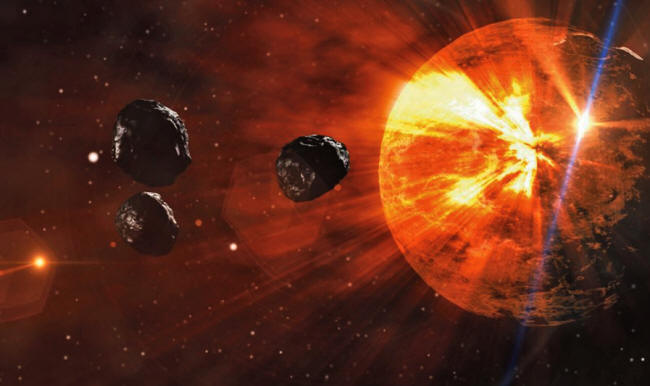
Flawed
theories
of human
development
give strength to
the argument that
life on Earth
originated elsewhere
in the cosmos...
Introduction
Abiogenesis is the dominating theory which explains the origin of
life on Earth.
It evolved from the
primordial soup theory to the present-day RNA World hypothesis. It
is possible that it could be shown that some components of life
could have originated from inorganic matter but proving their
transition to the living cell would be much more difficult.
There are two problems facing
abiogenesis.
The first problem is
that the cell architecture is not coded by DNA.
This means that genes
provide information on how to build basic blocks of life such as
proteins, enzymes, molecular complexes, etc., but that genomes
contain no genes that specify cellular forms such as membranes
or cytoskeletons. 1
So genes specify
molecular parts, but not their arrangement into a higher order.
This means that every cell originates from a mother cell.
The second problem is that even the simplest cell has a
sophisticated control system which drives the cell's life cycle.
2
The cell cycle system
is comprised of multiple modular subsystems that implement
cellular growth and reproduction.
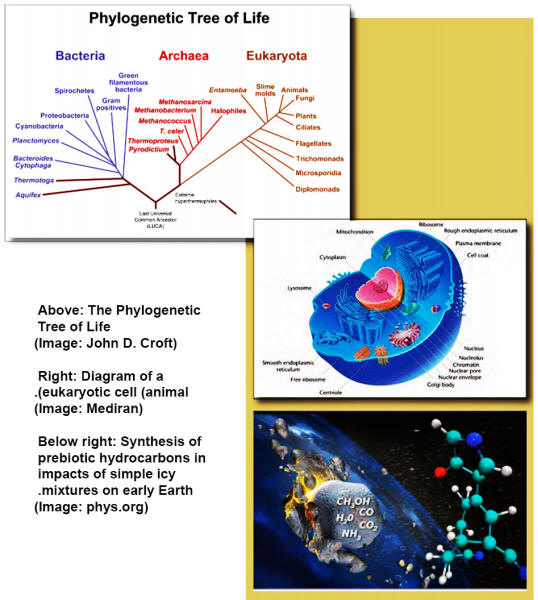
An integral control
system, constructed using biochemical and genetic logic circuitry,
organizes the timing of initiation of each of these modular
functions, similar to electronic control systems designed by man.
This control system is
not coded by the cell DNA but is inherited from the mother cell.
Since genes are not
involved with the cell structure and its control system, it is
difficult to envisage how abiogenesis could be responsible for the
origins of life.
These problems are not applicable to
the panspermia hypothesis which was
revived by Crick and Orgel. 3
Hoyle and
Wickramasinghe 4 confirmed that life could have come
from the cosmos and further research shows that bacteria and even
higher organisms could have survived a journey through space.
Since these proposals,
molecular and genetic research has shown that life is far more
complex than was ever suspected and panspermia is becoming a serious
alternative to the theory of evolution.
The fact that life started very soon after Earth became habitable is
one of the strongest arguments for panspermia.
It is assumed that
Latest Universal Common Ancestor,
LUCA, which existed about four
billion years ago, was a very sophisticated organism having between
500 and 1,000 genes and fully developed photosynthesis and
respiration systems.
Therefore, there
would not have been enough time for LUCA to evolve from the
considered progenitor of life.
After the seeding of
Earth, it was assumed that life developed further as a result of
evolution.
Since it is doubtful that
Darwinian evolution was responsible
for the generation of complex organisms which needed thousands of
beneficial mutations, it was proposed that strong panspermia
5 could be responsible for further development.
This hypothesis
postulates that new genes from space sustained evolutionary
progress.
It is known that
horizontal gene transfer in bacteria modifies the genetic makeup
of organisms.
It is possible that
viruses from space could have injected their genetic material
into bacteria and modified their genes.
It has been proposed
that panspermia could be intentional, although some believe that
it was completely fortuitous.
Panspermia provides
plausible explanations for the origin of life and the arising of
eukaryotic cells on Earth.
However, there are two
milestones in the development cycle of intelligent life that might
be difficult to explain using simple panspermia.
These two milestones are:
-
the Cambrian
explosion
-
the human brain
Cambrian
Explosion
During the
Cambrian explosion, around 540
million years ago, the body plans of all existing phyla belonging to
the animal kingdom suddenly appeared.
During the
20-million-year period there appeared such different classes of
animals as,
-
vertebrates
6
-
arachnids
-
mollusks
These animals did not
arrive in sequence from simple to more complex forms, but turned
up almost simultaneously...
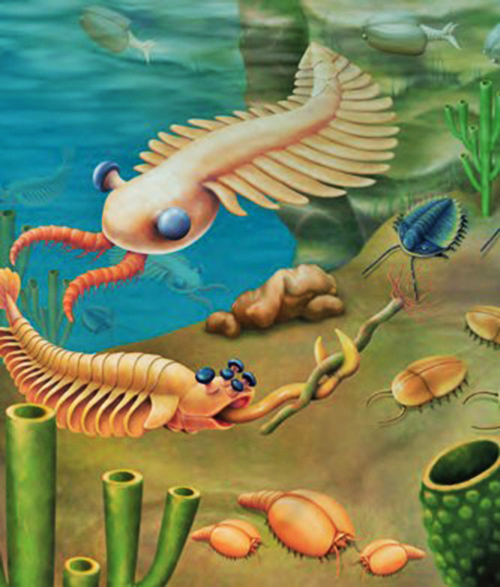
An artist's impression of
animals
during the Cambrian Explosion.
https://cnx.org
Most significantly, during this period the complexity of organisms
increased by several orders of magnitude.
In comparison with
eukaryotic cells, new organisms had
tens of thousands of new proteins and their genome was considerably
increased to approximately 20,000 genes.
Even the simplest
animals needed new organs such as skin, a skeleton, muscles,
neurons, and digestive, reproductive, respiratory and
circulation systems.
Besides these organs,
more advanced animals had eyes, a brain, a spine and various
sensors.
To build these
organs, approximately 200 different types of cells were used.
To get a glimpse of how complex the building process of new
organisms is, we have to look at embryo development.
The whole process is
controlled by
Hox genes. 7
These genes provide the
overall layout of the body, defining the position of the main parts
such as the,
head, trunk, limbs,
internal organs, etc.
Each of the Hox genes
switches on other genes which provide more detailed information
about the position and structure of different tissues needed to make
these parts.
Eventually the position
and type of almost every cell in the body must be specified.
If we consider that
organisms consist of trillions of cells, the
embryo development control system is extremely complex, and has been
since the earliest animals.
The complexity of embryo assembly can be seen in the example of the
human eye which is controlled by about 2,000 genes. In the human
embryo, approximately 3,000 gene regulatory compounds are at work.
The embryo development
control system had to have been introduced as a complete unit
because even small genetic deviations would have resulted in
detrimental results.
It is highly unlikely that the simultaneous development of large
morphological structures and complex genetic control systems
arose as a result of implanting a few new genes.
Therefore, the mechanism
of simple panspermia could not have been responsible for such
developments.
Homo Sapiens
There is extensive scientific evidence showing that Homo sapiens
suddenly appeared in Africa about 200,000 years ago.
The dating of this event
is supported by the earliest human fossils from this period and the
mitochondrial DNA inherited through the maternal line.
Modern people's
mitochondrial DNA can all be traced back to a common ancestor,
an "Eve" that lived about 200,000 years ago.
Neanderthals, which appeared
possibly about 600,000 years ago, were our closest relatives.
However vast numbers
of Neanderthal genes are not carried by contemporary humans.
8
Results from new studies
confirm that Neanderthal and human genomes are more than 99.5 per
cent identical, differing by about 3 million bases.
The Neanderthal
mitochondrial DNA sequences are substantially different from
modern human mtDNA. 9
Researchers compared
the Neanderthal, modern human and chimpanzee sequences.
Most human sequences
differ from each other by on average 8.0 substitutions, while
the human and chimpanzee sequences differ by about 55.0
substitutions.
The Neanderthal and
modern human sequences differ by approximately 27.2
substitutions.
This would indicate a
significant separation between these two groups.
Genetic studies show that H. sapiens did not descend from
Neanderthals and we separated from them about 400,000 years ago.
It is assumed that
Homo heidelbergensis that lived in
Africa, Europe and western Asia between 600,000 and 250,000 years
ago is the ancestor to not only Neanderthals but also H. sapiens,
but there is no genetic evidence to confirm this.
H. heidelbergensis looked
very similar to Neanderthals but was significantly different from H.
sapiens.
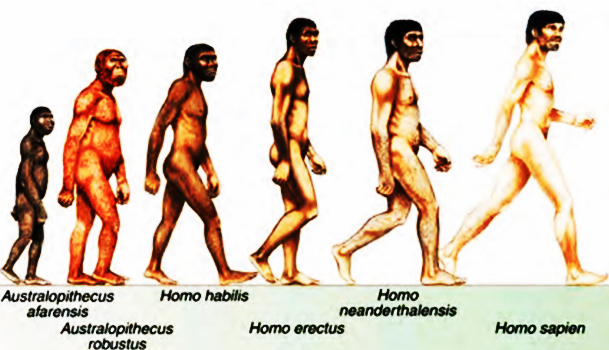
Therefore, one could say that,
there is no direct
link between H. sapiens and any prior hominid group. 10
Because there is no
indication who our direct ancestors were, a hypothesis was proposed
that H. sapiens continuously evolved over several hundred thousand
years. 11
However, there is no
fossil evidence supporting this hypothesis.
An extensive list of tools used by humanoid species, which were
dated from several millions of years ago, is provided by Cremo
and Thompson. 12
This shows that the
origin of humanoid species is much older than recognized by
mainstream academia and there is no clear line of progression from
less developed to more advanced hominids.
It is possible that
intelligent life on Earth is the result of a purposeful
experiment carried out
by an extraterrestrial civilization...
What distinguishes us
from the animal world is our unique brain.
The functioning of the
human brain is an extension of the operation of the animal brain
which has been developed since the Cambrian explosion.
The human brain has
several functions common to mammals such as vision, hearing and
positioning system. 13
However, the human mind
has several very special properties such as
consciousness and logical and
abstract thinking which distinguish it from the animal brain.
The genetic development of the human brain is full of unknown
stages. It appears that at least a third of approximately 20,000
different genes that make up the human genome are primarily active
in the brain.
This means that
the brain has the most complex
structure of the entire body.
There are two clusters of
hundreds of individual genes that are thought to influence all our
cognitive functions including:
memory, attention,
processing speed and reasoning...
The genetic study of
Neanderthals shows that, in genes responsible for making proteins,
87 differ from those found in modern humans. 14
Some gene differences are
involved in both the immune responses and the development of brain
cells.
One can assume that H.
heidelbergensis had a less developed brain than Neanderthal man,
therefore there must be an even bigger difference between the brains
of H. heidelbergensis and H. sapiens.
It was shown by the Lahn group (Bruce
Lahn and his
UC colleagues) at the Howard
Hughes Medical Institute at the University of Chicago that
further modification of the human brain took place about 37,000
years ago when the prevalent microcephalin variant 15
emerged, while the dominant
ASPM variant appeared about 5,800
years ago. 16
Advanced
Panspermia
The question arises whether strong panspermia could be
responsible for the development of life during and after the
Cambrian explosion:
Strong panspermia is
the extension of modern panspermia to deal with evolution as
well. In strong panspermia, the genes for evolutionary advances
are not written by copying mistakes and reshuffling within an
original set of bacterial genes.
Instead they are
installed by gene transfer.
If these genes are
spread by infectious agents such as viruses, they can transform
whole populations in a single generation.
Source
Our understanding of
embryo development is that thousands of new genes and gene control
substances were involved in the development of higher organisms.
Also, it is difficult to
envisage the partial development of the pyramidal structure of the
Hox gene control system and this indicates that the
architecture of the control system would have to have been developed
as a complete operational unit.
It looks as though such a
system would not have been able to be generated by evolution or
strong panspermia.
To explain the development of complex life on Earth we have to
consider that a different mechanism was in operation, and I call
this mechanism 'advanced
panspermia'...
It is possible that
intelligent life on Earth is the result of,
a purposeful
experiment carried out by an extraterrestrial civilization...
This experiment would
have involved seeding Earth with the first cells to prepare the
Earth's biosphere for supporting more complex life.
Once Earth had a
sufficient amount of oxygen, multicellular life was introduced
during the Cambrian explosion...
It is possible that the
Cambrian explosion started when the embryos of all
phyla were sent in special
containers suitable for space travelling. Since all life was water
based, such embryos placed in water or ice would be protected
against radiation.
One could envisage
that the ocean fauna was prepared in such a way, that simple
organisms were sent first, followed by more advanced animals.
Such transport could have
been used in the further development of water-based animals but
would not be suitable for land-based animal embryos.
The development of
land-based animals would have taken place via genetic modifications
of germ cells, which are normally placed inside animal bodies.
Such modifications could
have been achieved by internal genetic variability mechanisms which
exist in chromosomes or by suitably engineered viruses.
It is possible that
transposons played a significant
role in this development process. 17
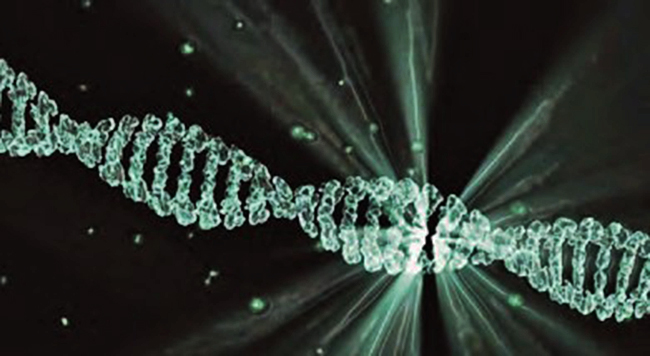
How could the development of H. sapiens proceed?
It is possible that the
development of early hominids progressed using specially designed
viruses or other genetic modifications. Tattersall believes
that at least 20 hominid species existed during the last several
million years.
He says:
"Our biological
history has been one of sporadic events rather than gradual
accretions.
Over the past five
million years, new hominid species have regularly emerged,
competed, coexisted, colonized new environments and succeeded or
failed". 18
This process produced
many different groups of apelike and humanlike beings.
According to Cremo
and Thompson, there is overwhelming evidence that,
advanced human forms
were already present several million years ago...
12
The existence of so many
hominid species which disappeared without a trace indicates that the
brain modification methods used were not very successful.
The problem was that
while the upright body was easily implemented, the development of
the brain was much more difficult. Brain modification requiring
changes to hundreds of genes needed very precise genetic
manipulations.
This problem can be better understood when we look at the
development of Neanderthals.
The Neanderthals had a
very large brain 19, about 1,600 cubic centimeters, but
still its performance was far from what was needed.
The problem was that
the new hominid groups arising from the old groups carried many
old genes.
These genes impeded
brain development but they could not be easily removed.
This is confirmed by
the study of the Neanderthal genome.
There is a strong
indication that the Neanderthal's genes were harmful to human,
Neanderthal hybrids and their descendants. 20
A possible solution was,
to use direct
genetic modifications...
The proposed scenario is
that the H. sapiens embryo was produced by in vitro fertilization
and was implanted in a suitable surrogate mother.
In that way, it was
guaranteed that new genes were introduced and all unwanted or
harmful genes were removed or modified.
One cannot exclude the possibility that the surrogate mother was a
Neanderthal woman,
therefore early H. sapiens could have lived together with
Neanderthals.
This could explain why
about two per cent of the DNA of people with European ancestry can
be traced to Neanderthals, while some other ethnic groups can have
up to six per cent of Neanderthal genes.
Several genetic
studies indicate that there is a vast genetic difference between
H. sapiens and Neanderthals. 14
Such a big difference
could only arise in such a short period of time as the result of
purposeful genetic modifications.
The hypothesis of the
involvement of
extraterrestrial civilizations in
the arising of intelligent life on Earth, should be considered
because the existence of such civilizations is an accepted
hypothesis as shown by the SETI program which searches for alien
signals.
This search has not
brought any results because we assume that these civilizations are
similar or only slightly more advanced than ours.
However, it is not
unrealistic to assume that extraterrestrial civilizations could be
several million or maybe even billions of years old,
therefore their capabilities would be much more advanced than ours,
making them very difficult to contact.
Support for extraterrestrial design also comes from the analysis of
our genetic code.
Work performed by sh.
Cherback and Makukov shows unexplained properties of DNA
codes which would require some intelligent approach that cannot be
accounted for by Darwinian evolution.
They say that,
"simple arrangement
of the code reveals an ensemble of arithmetical and
ideographical patterns of symbolic language.
Accurate and
systematic, these underlying patterns appear as a product of
precision logic and nontrivial computing rather than of
stochastic processes". 21
A particular property of
the human brain which could not have arisen as a result of simple
genetic modifications is,
its ability for
further development...
This development is most
visible in
the domain of consciousness.
It is known that the
genetic makeup of the human brain has not changed for the last 6,000
years, but we observe significant development of human thinking
and consciousness, for example concern about the environment,
climate change and the Earth's future.
This shows that the human
brain has built in a function enabling further development which is
not based on genetic or evolutionary mechanisms.
Therefore one could
predict that the development of the human race will result in a
more humanitarian society. Looking at the present state of the
world we might be under the impression that things are getting
worse.
However, if we compare
our present situation with the situation a hundred years ago we can
see tremendous progress in practically all aspects of our lives.
There is a growing body of evidence showing that life on Earth is a
far more complex phenomenon than we have ever considered it to be.
The most complex
organ without any doubt is the human brain.
It is very likely
that extraterrestrial beings were responsible for its design.
However, implementing
this design in human beings would require the direct contact of
extraterrestrials with Earth.
It is difficult and maybe
unwise to speculate about the extraterrestrial civilization.
Such a civilization
would have had to exist for at least four billion years and
therefore be advanced beyond our comprehension...
Endnotes
-
Harold F.M.
(2005), "Molecules into cells: specifying spatial
architecture", Microbiology and Molecular Biology Reviews
69: 544-564.
-
McAdams H.H.,
Shapiro L. (2009), "System-level design of bacterial cell
cycle control", FEBS Lett 583: 3984-3991.
-
Crick F.H.C.,
Orgel L.E. (1973), "Directed Panspermia",
Icarus 19: 341-346.
-
Hoyle F.,
Wickramasinghe N.C. (1980), Evolution from Space, JM Dent,
London.
-
Klyce B. (2001),
"Panspermia
Asks New Questions" - The Search for
Extraterrestrial Intelligence (SETI) in the Optical Spectrum
Conference 22-24 January 2001, San Jose CA: SPIE
Proceedings-4273, pp: 11-14.
-
Morris S.C.,
Caron J.B. (2014), "A primitive fish from the Cambrian of
North America", Nature 512: 419-422.
-
Mallo M., Alonso
C.R. (2013), "The regulation of Hox gene expression during
animal development", Development 140: 3951-3963.
-
Sankararaman S.,
Patterson N., Li H., Pääbo S., Reich D. (2012), "The Date of
Interbreeding between Neandertals and Modern Humans", PLOS
Genetics 8: 1-9.
-
Krings M., Stone
A., Schmitz R.W., Krainitzki H., Stoneking M., et al.
(1997), "Neandertal DNA Sequences and the Origin of Modern
Humans", Cell 90: 19-30.
-
Kennedy G.
(1980), "The emergence of modern man", Nature 284: 11-12
-
Weaver T.D.
(2012), "Did a discrete event 200,000-100,000 years ago
produce modern humans?", Journal of Human Evolution 63:
121-126.
-
Cremo M.A.,
Thompson R.L. (1999),
Forbidden Archeology
-
The Hidden History of the Human Race - Bhaktivedanta book
publishing, Los Angeles.
-
Moser E.I., Roudi
Y., Witter M.P., Kentros C., Bonhoeffer T., et al. (2014),
"Grid cells and cortical representation", Nature Reviews
Neuroscience 15: 466-481.
-
Prüfer K., Racimo
F., Patterson N., Jay F., Sankararaman S., et al. (2014),
"The complete genome sequence of a Neanderthal from the
Altai Mountains", Nature 505: 43-49.
-
Evans P.D.,
Gilbert S.L., Mekel-Bobrov N., Vallender E.J., Anderson J.R.,
et al. (2005), "Microcephalin, a Gene Regulating Brain Size,
Continues to Evolve Adaptively in humans", Science 309:
1717-1720.
-
Mekel-Bobrov N.,
Gilbert S.L., Evans P.D., Vallender E.J., Anderson J.R., et
al. (2005), "Ongoing adaptive Evolution of ASPM, a Brain
Size Determinant in Homo Sapiens", Science 309: 1720-172.
-
Feschotte C.,
Pritham E.J. (2007), "DNA transposons and the evolution of
eukaryotic genomes", Annual Review of Genetics 41: 331-368.
-
Tattersall I.
(2000), "Once We Were Not Alone", Scientific American 282:
56-62.
-
Clinton K.
(2015), "Average Cranium/Brain Size of Homo neanderthalensis
vs Homo sapiens", The Backbone.
-
Juric I.,
Aeschbacher S., Coop G. (2016), "The Strength of Selection
against Neanderthal Introgression" PLOS Genetics
-
Cherbak V.I.,
Makukov M.A. (2013), "The
'Wow! signal' of the terrestrial genetic code".
Icarus 224: 228- 242.
| 





